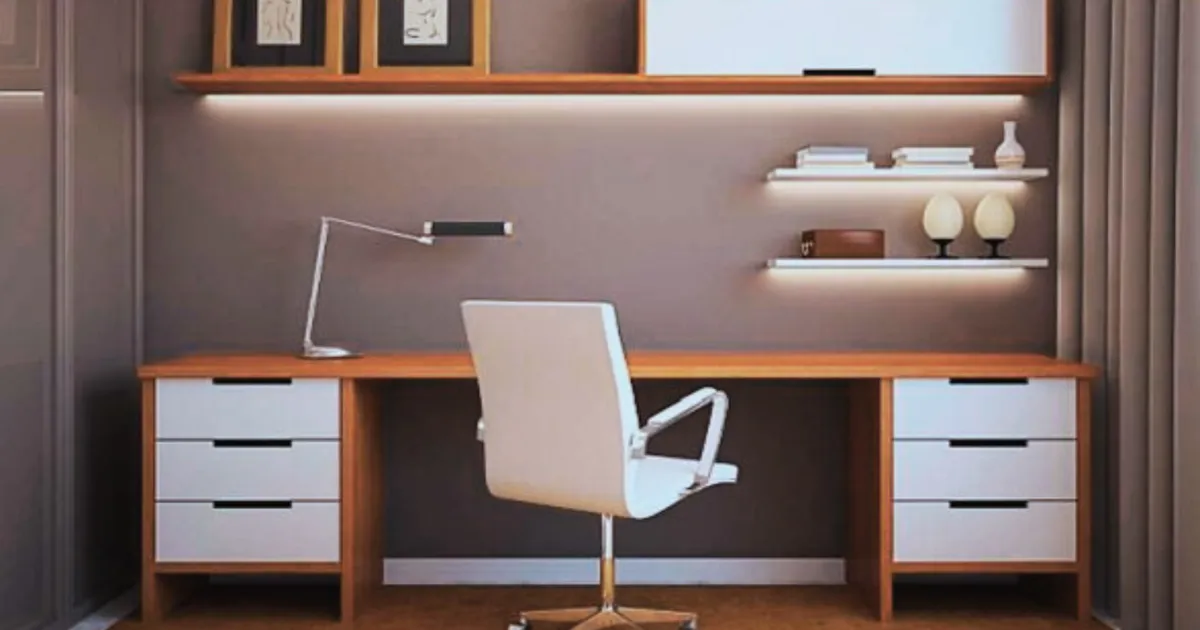The pandemic has impacted our homes and work habits, but while lockdowns have faded, one significant change remains remote work. Today, work-from-home arrangements are standard for many, and the demand for home offices has grown significantly. Homebuyers now view dedicated office spaces as essential, driving a fresh approach to interior design that blends functionality and style.
What We Miss About Traditional Office Spaces
A recent survey indicates that 36.2 million Americans are projected to be working remotely by 2025, reflecting a significant shift in workplace dynamics and emphasizing the importance of well-designed home office spaces to replicate the productivity of traditional offices.
With many companies embracing remote or hybrid work setups, the need for physical office space has decreased, shifting the role of our homes to accommodate work. Despite the convenience, there are elements of traditional offices that people need to pay attention to, particularly well-thought-out workspaces designed to enhance focus and productivity.
Office environments, often meticulously organized and structured, set a mood that promotes professionalism and concentration—qualities that are challenging to replicate in a home without intentional design.
Interior Design Solutions for the Home Office
The demand for home offices is reshaping interior design, focusing on flexibility and functionality within home layouts. Interior designers and architects increasingly create dedicated workspaces separate from communal areas and optimized for focus and productivity.
Home offices need to be functional, quiet, well-lit, and comfortable—qualities that boost efficiency and make remote work not just possible but preferable.
Research shows that a well-designed workspace can increase productivity by 6% and enhance creativity by up to 15%, underscoring the necessity for intentional design that fosters focus and efficiency in home offices.
What Is Flexible Interior Design and Why Is It Important?
Flexible interior design means creating spaces that serve multiple purposes without compromising aesthetics or functionality. Designers should set an effective home office apart from high-traffic areas, such as the kitchen or living room, to minimize distractions.
However, flexibility means space can adapt as needs evolve, possibly transforming from a workspace during the day to a guest room or even a workout space during off-hours.
A recent report indicates that 77% of interior design experts agree that multifunctional spaces are the most significant trend for home offices in 2024.
Additionally, 39% of professionals believe that minimalism and moody design will be prominent, highlighting a solid preference for designs that allow spaces to serve multiple purposes while maintaining aesthetic appeal and reducing distractions.
Critical Aspects of Flexible Interior Design:
Functionality: A home office with adequate storage and ergonomic furniture should be organized. Multifunctional furniture, such as fold-away desks, wall-mounted shelves, and mobile storage units, allows the space to be quickly reconfigured when not used as an office.
Comfort and Ambiance: Good lighting—natural when possible—and ventilation contributes significantly to comfort. Adding personal touches and greenery can make the space more inviting and reduce stress.
Privacy and Quiet: Acoustic panels, soundproofing, and careful layout planning help keep the area distraction-free, which is essential for online meetings and focused work.
Optimizing Unused Spaces for Remote Work
Designers can repurpose underutilized areas in homes where adding a new room is impossible. For instance, a guest bedroom can double as an office with a fold-away bed or sleeper sofa. Hallway nooks, closets, and even attic spaces can be transformed into compact work zones. This approach maximizes existing square footage and aligns with a more sustainable, resourceful architectural philosophy.
The trend of repurposing underutilized areas is increasingly evident as homeowners prioritize home offices over less frequently used spaces like guest rooms.
A recent survey found that 67% of home staging and design experts report that clients now favor home offices, viewing them as essential in a remote work environment.
This shift highlights a significant change in real estate values, where functional home office designs are becoming more desirable than traditional spare rooms. As remote work solidifies its place in daily life, the demand for dedicated workspaces grows, prompting homeowners to rethink how they utilize their available space effectively.
A Shift in Home Buying Trends
The desire for dedicated home offices is influencing the real estate market. Homebuyers today often prioritize properties with separate offices or versatile rooms that can be adapted into workspaces.
Developers are also responding by incorporating office spaces into floor plans, and open-concept designs now frequently include alcoves or enclosed areas for work purposes.
The demand for dedicated home office spaces is evident, with over 70% of interior design professionals reporting that clients prioritize properties with separate offices or adaptable rooms for work purposes.
The observation that many buyers are willing to sacrifice other amenities for homes that can accommodate a functional workspace further supports this trend.
Final Thoughts: Embracing the Future of Home and Work Spaces
The rise of remote work has forever changed how we think about our homes. No longer just places to unwind, our homes are now where many of us spend our workdays, requiring a delicate balance between functionality and comfort. This shift means that homes must be versatile and equipped to support the demands of both professional and personal life.
Flexible interior design has emerged as a critical response to this evolution, offering layouts that support various daily functions. Homeowners can create environments that serve their work and lifestyle needs without sacrificing style or comfort by focusing on adaptable spaces—whether through multifunctional rooms, ergonomic workstations, or efficient storage solutions. Adding touches like natural lighting, soundproofing, and comfortable furniture creates an inspiring atmosphere that enhances productivity while preserving a sense of relaxation.
As more individuals and families prioritize remote work, the demand for thoughtfully designed home offices will likely grow, influencing real estate trends and interior design practices. Whether planning a renovation or creating a new home, embracing flexible interior solutions is both practical and forward-thinking, supporting a lifestyle that accommodates the evolving blend of work and home life. As our needs continue to change, so will our spaces, reflecting a new design era that values adaptability, efficiency, and well-being.
